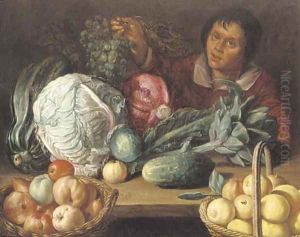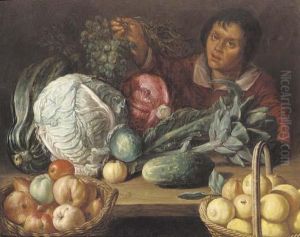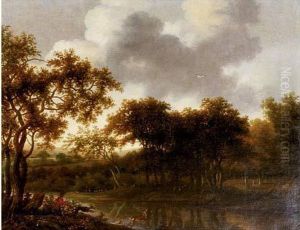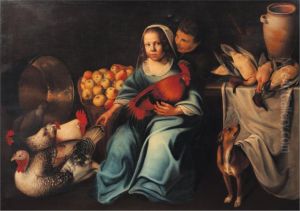Cornelis Willemsz. Eversdyck Paintings
Cornelis Willemsz. Eversdyck, born in 1610, was a notable figure in the realm of Dutch art during the 17th century, a period renowned for its significant contributions to the Golden Age of Dutch painting. Despite not being as widely recognized as contemporaries like Rembrandt or Vermeer, Eversdyck carved out a niche for himself with his distinct style and thematic preferences. His birthplace, often presumed to be in or near the bustling artistic hub of Amsterdam, provided a fertile ground for his artistic inclinations to flourish amidst the thriving Dutch Republic's cultural and economic golden era.
Eversdyck's artistic journey is less documented than that of his more famous peers, leading to a certain level of obscurity surrounding his life and works. However, what is known suggests a career that, while perhaps not as illustrious or prolific as some, was nonetheless marked by a dedication to the craft and a keen eye for the detail and realism that Dutch art of the period is celebrated for. His oeuvre primarily consisted of landscapes and seascapes, genres that were immensely popular among Dutch patrons and collectors of the time. Through these works, Eversdyck demonstrated a remarkable ability to capture the interplay of light and shadow, a characteristic feature of the Dutch landscape genre.
Eversdyck's paintings are noted for their meticulous attention to the subtleties of natural light, as well as their depiction of the Dutch countryside and maritime scenes, reflecting the nation's deep connection to the sea and its mercantile endeavors. His landscapes often feature a serene, almost idyllic quality, inviting viewers into a carefully constructed world of harmonious nature and human activity. Despite the apparent tranquility, many of his works subtly incorporate elements of the dynamic and sometimes tumultuous socio-political environment of the Dutch Republic during the 17th century.
The exact details of Cornelis Willemsz. Eversdyck's life, including his training and influences, remain somewhat enigmatic, partly due to the scarcity of records and the overshadowing fame of his contemporaries. Nonetheless, it is believed that he was part of the vibrant community of artists, patrons, and art dealers that contributed to the flourishing of Dutch art during this period. He likely interacted with, and was influenced by, the works of other artists in his community, absorbing and perhaps contributing to the evolving styles and techniques of the time.
Cornelis Willemsz. Eversdyck passed away in 1666, leaving behind a body of work that, while not as expansive as some of his contemporaries', provides a valuable glimpse into the artistic and cultural landscape of 17th-century Netherlands. His contributions, though perhaps underappreciated in the wider narrative of art history, remain a testament to the depth and diversity of talent that defined the Dutch Golden Age of painting.



